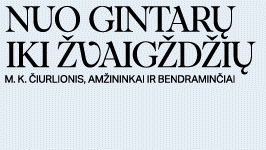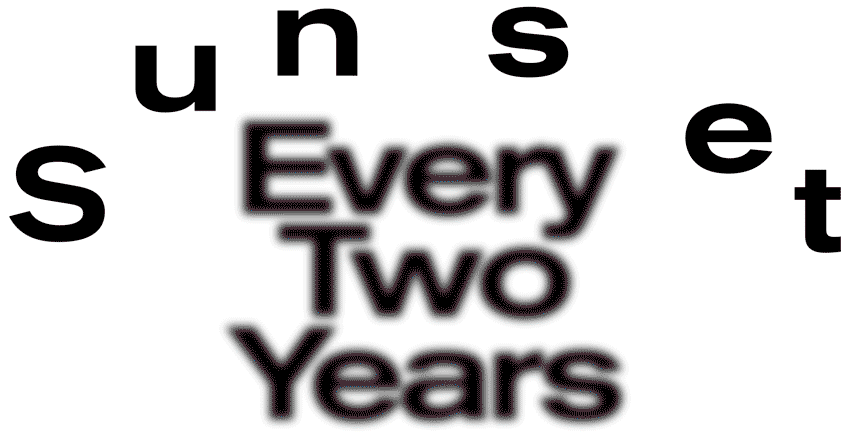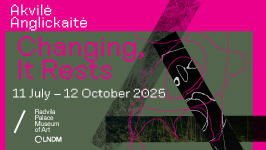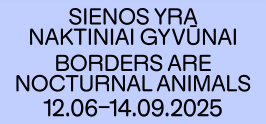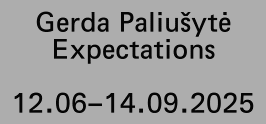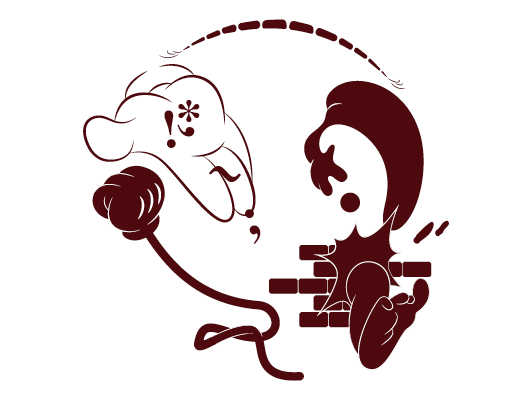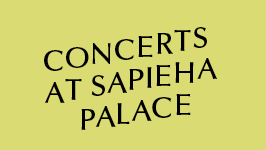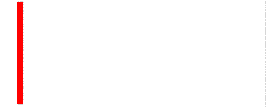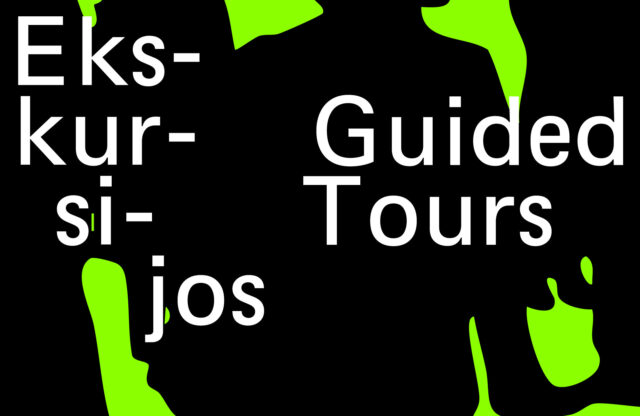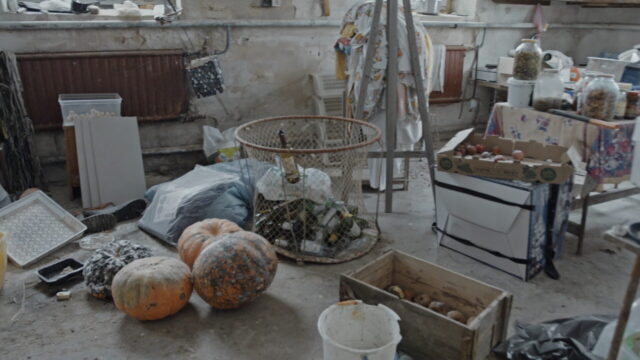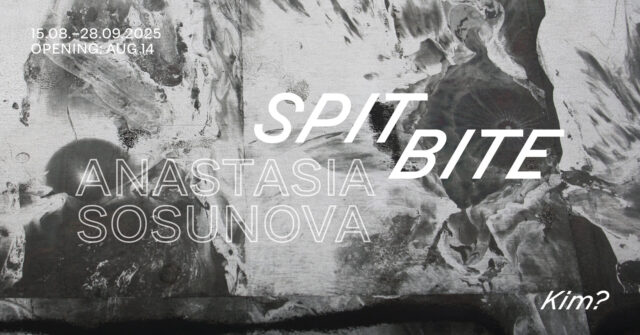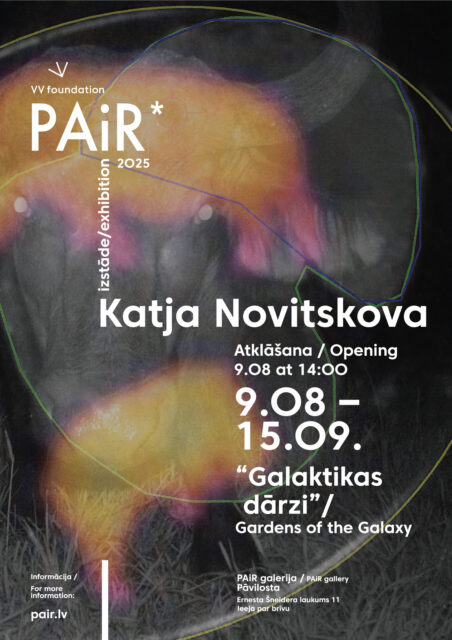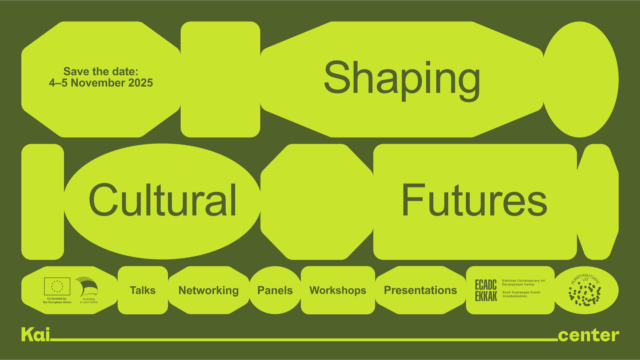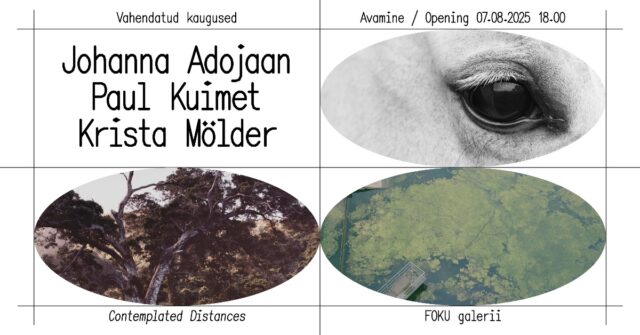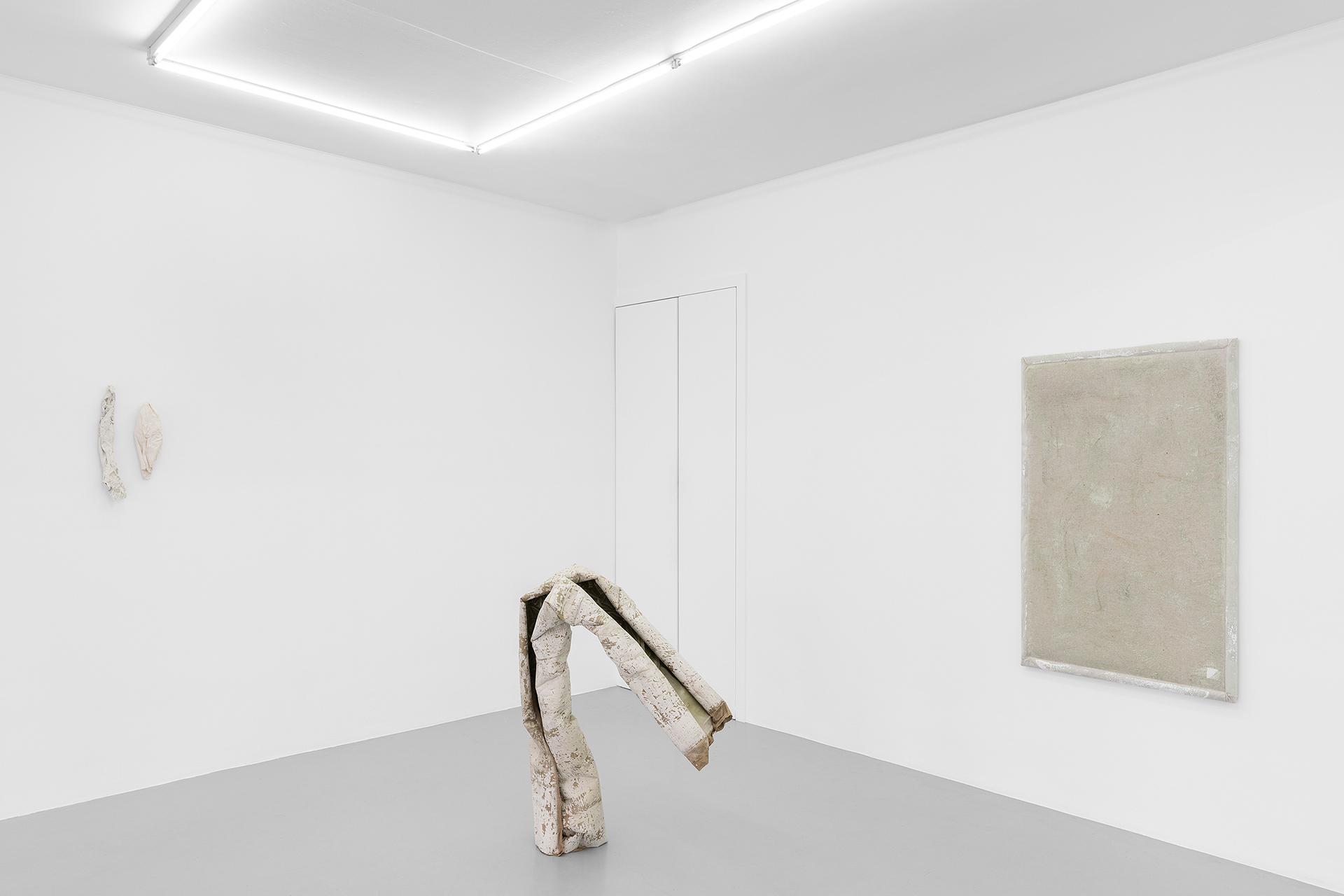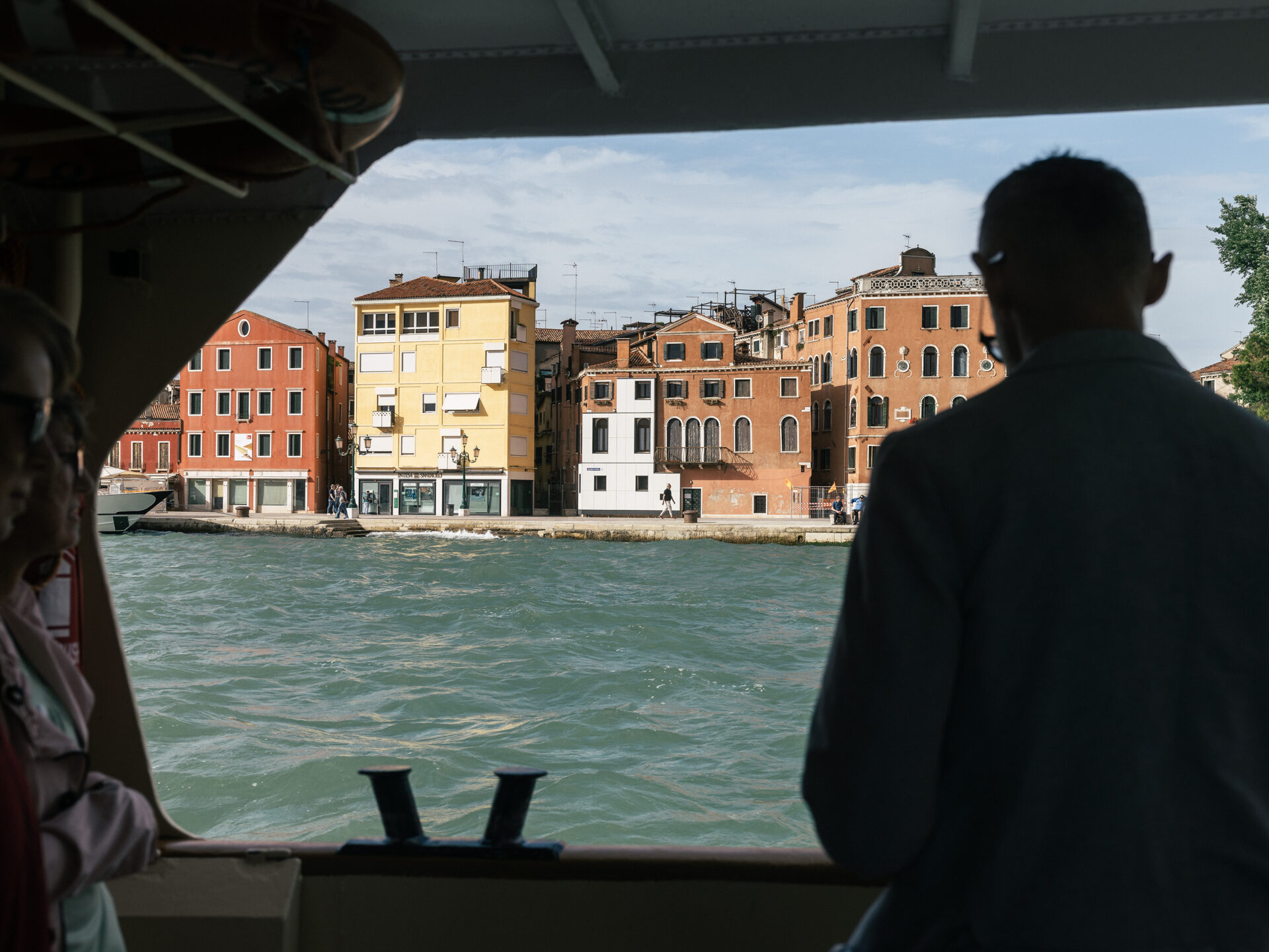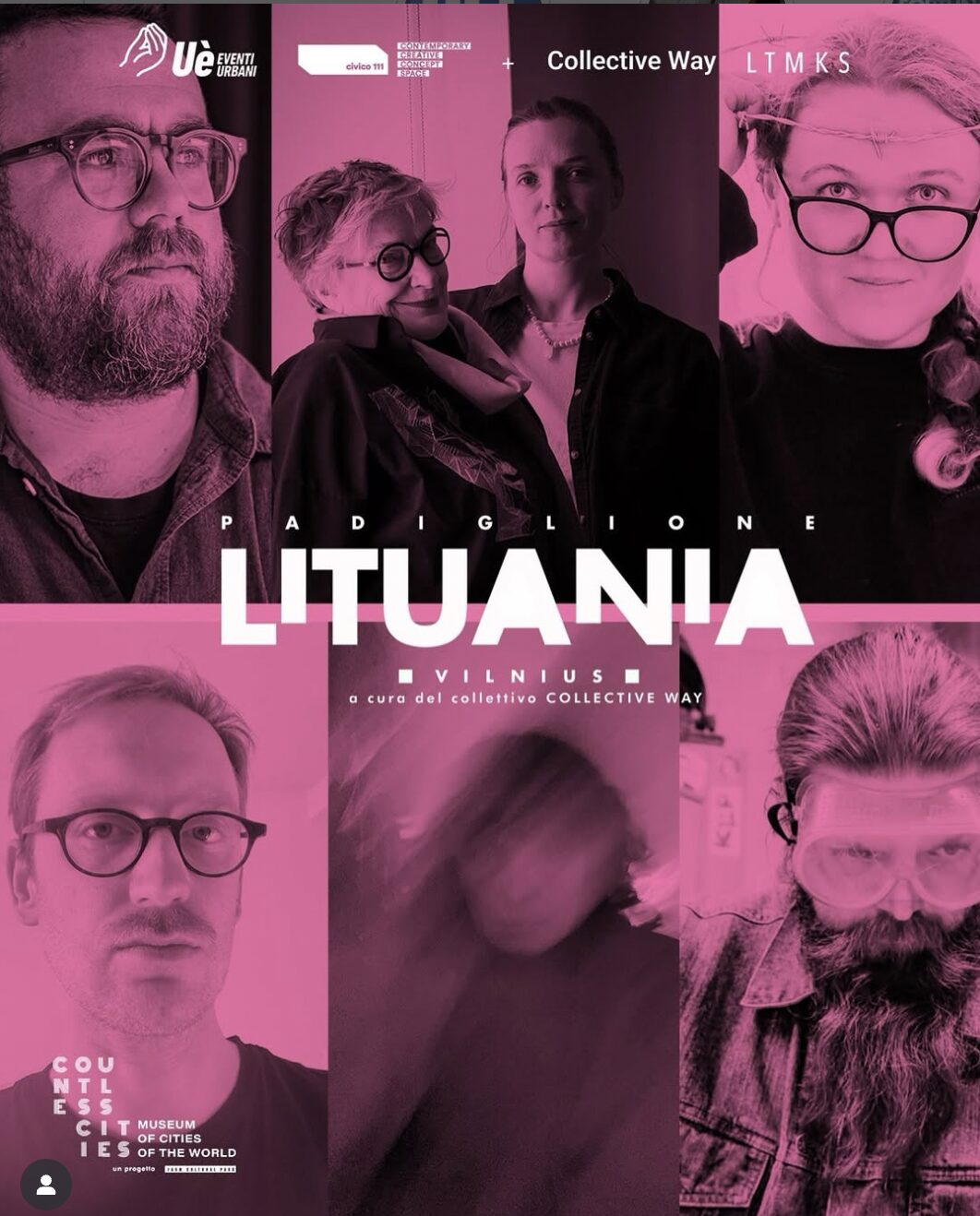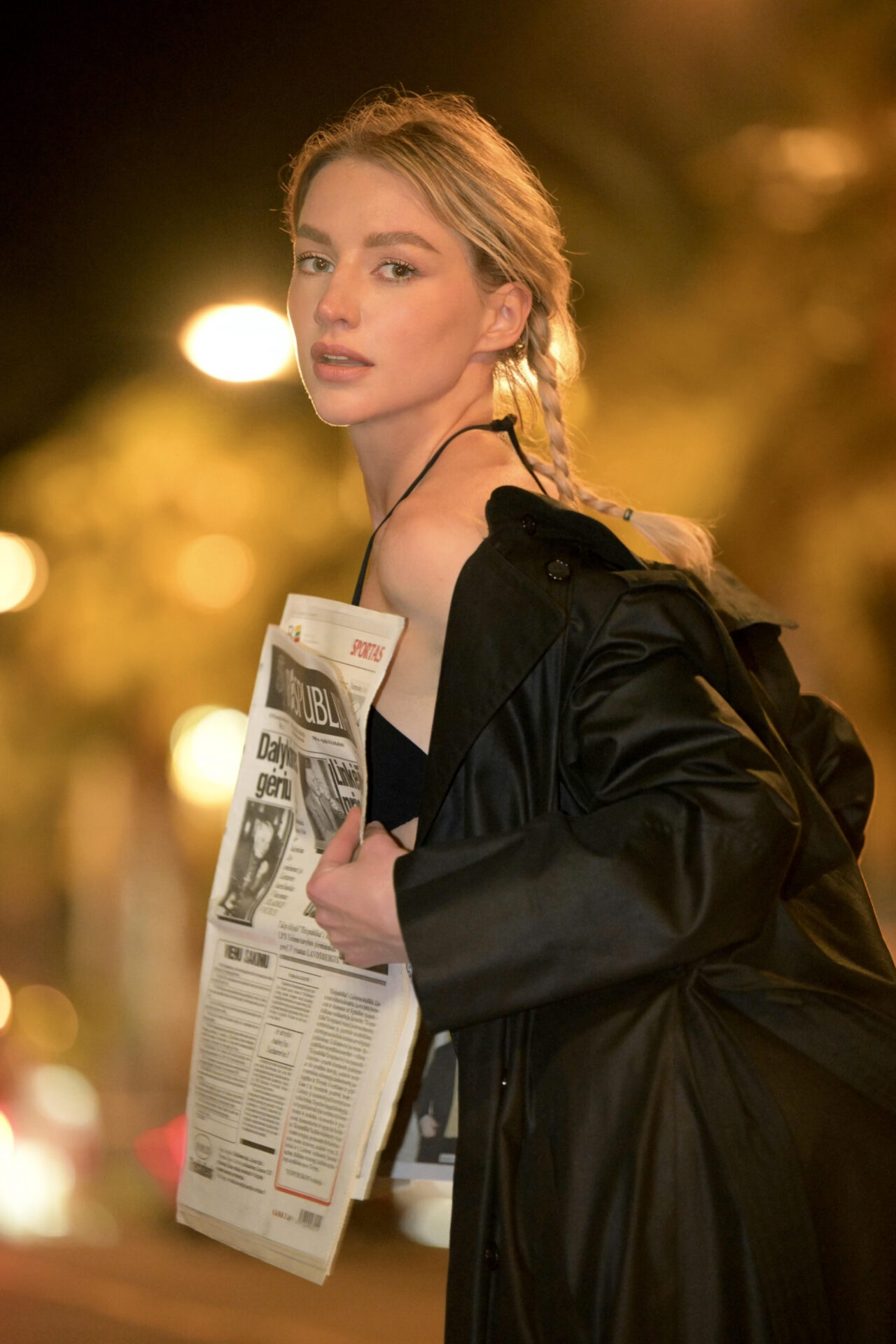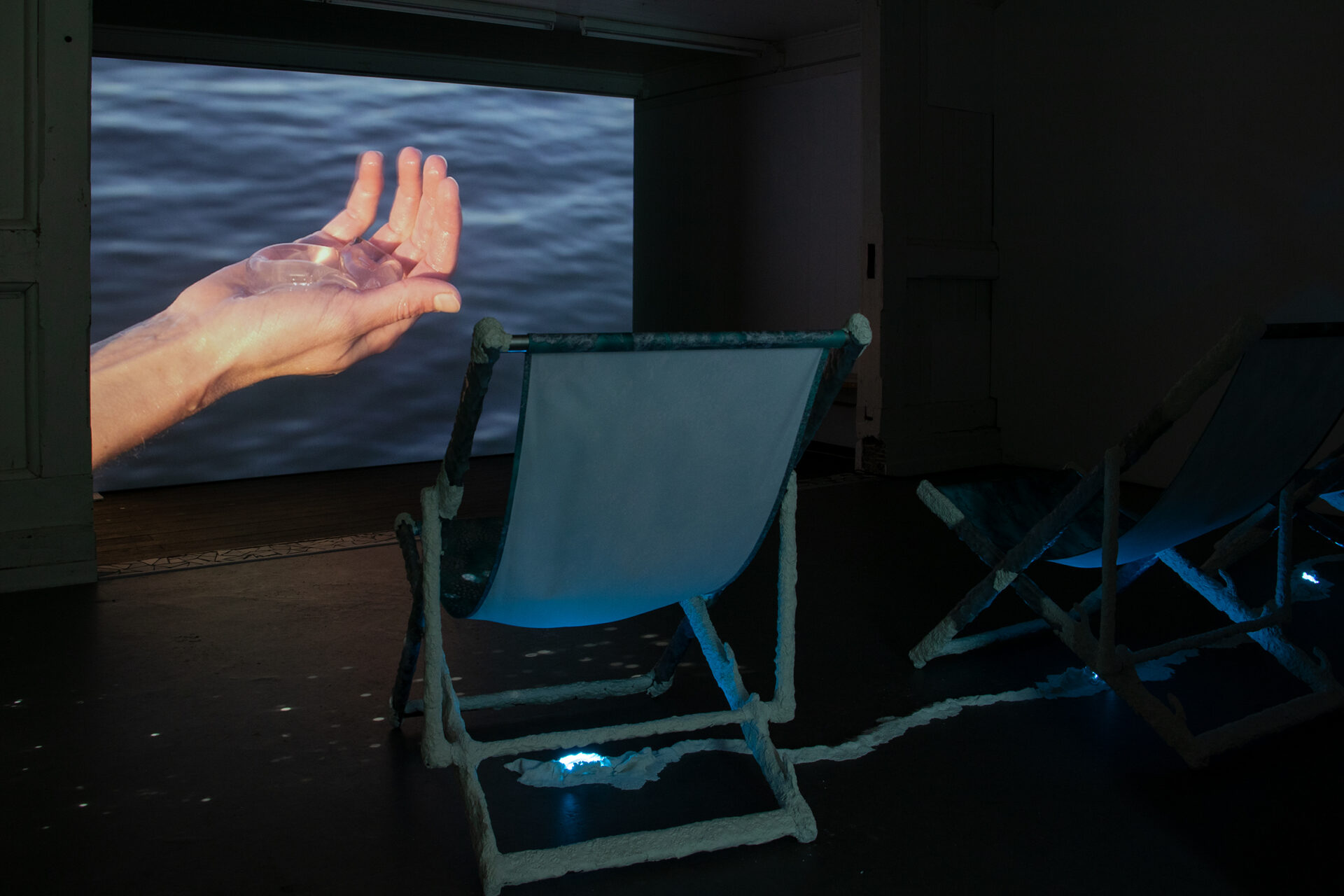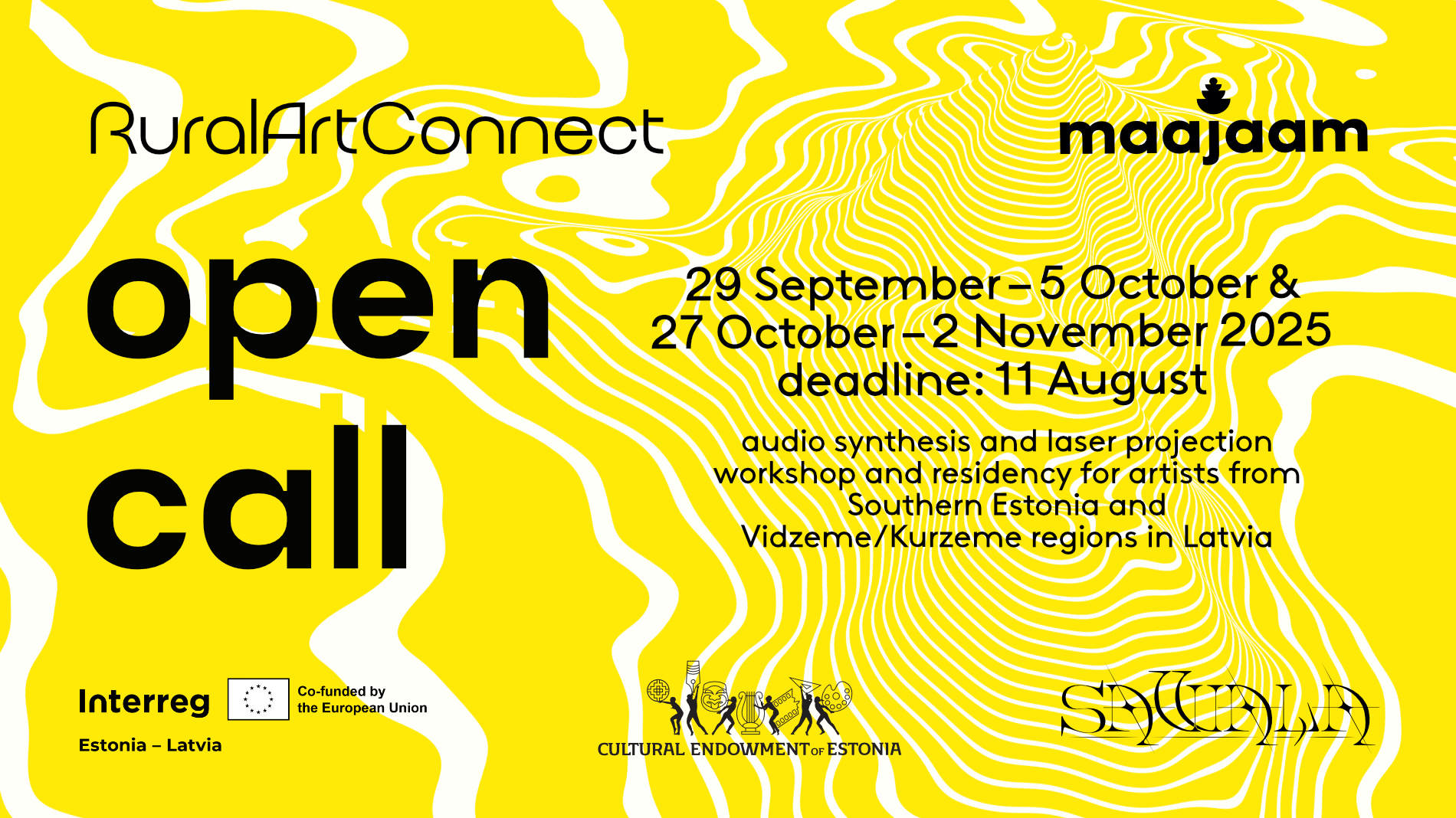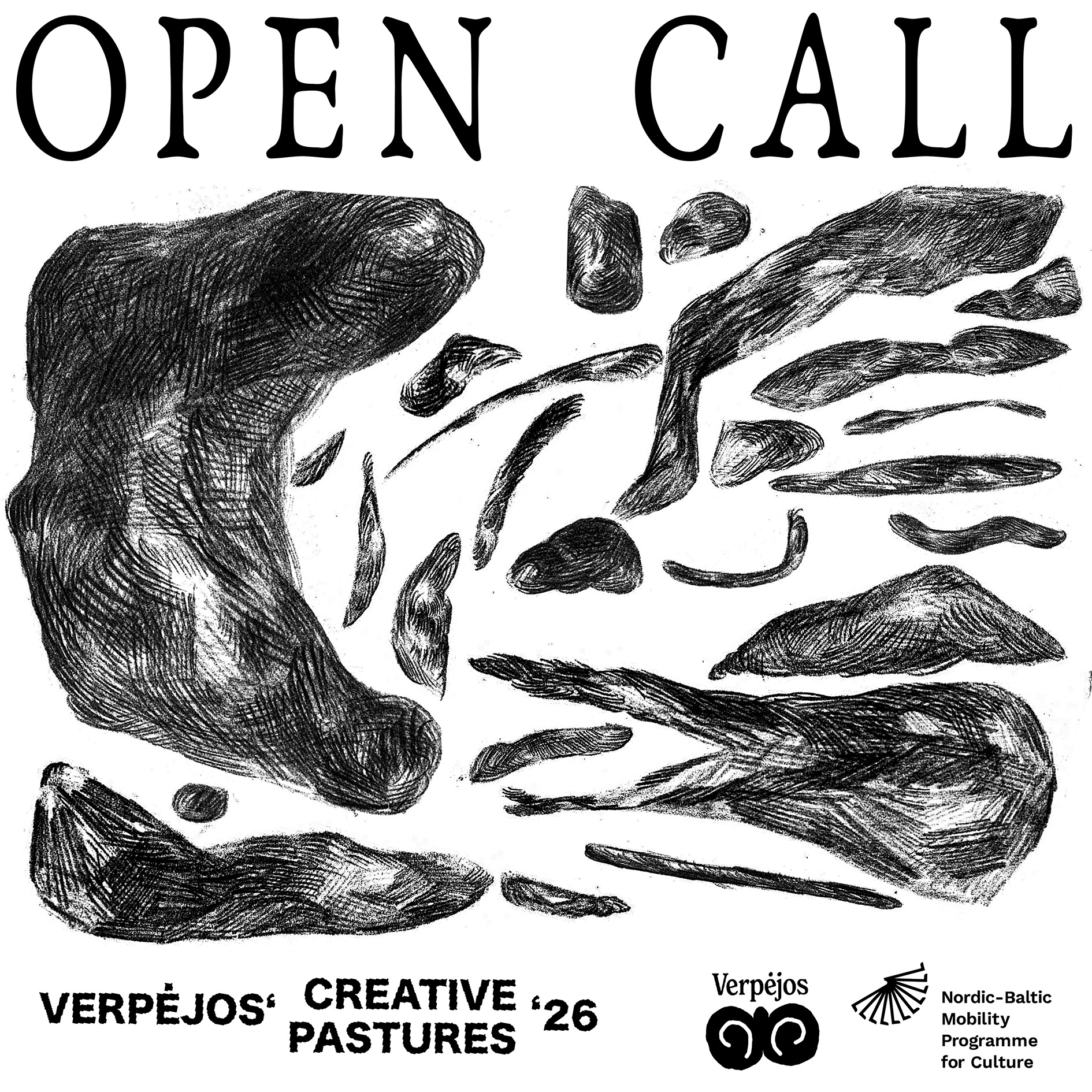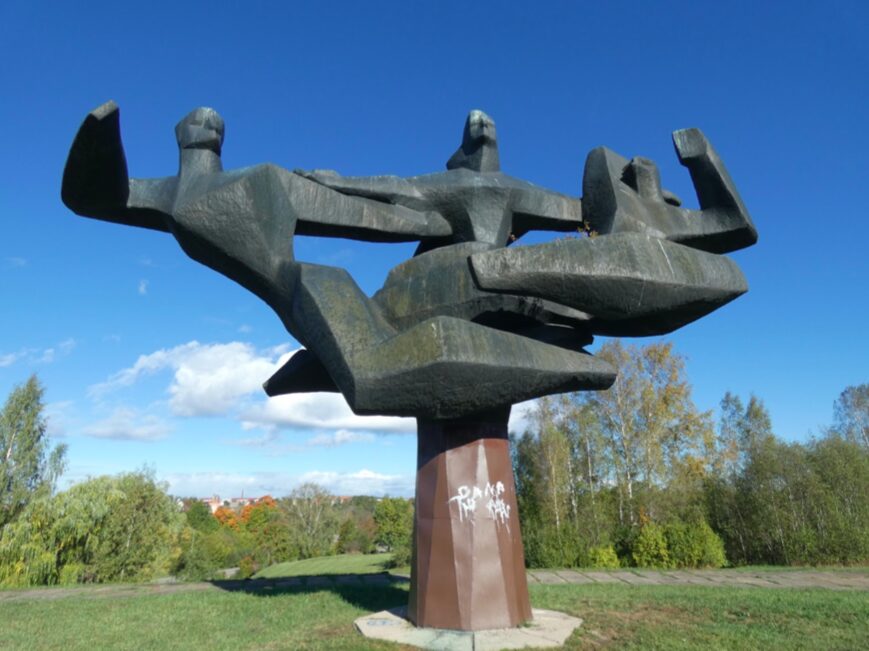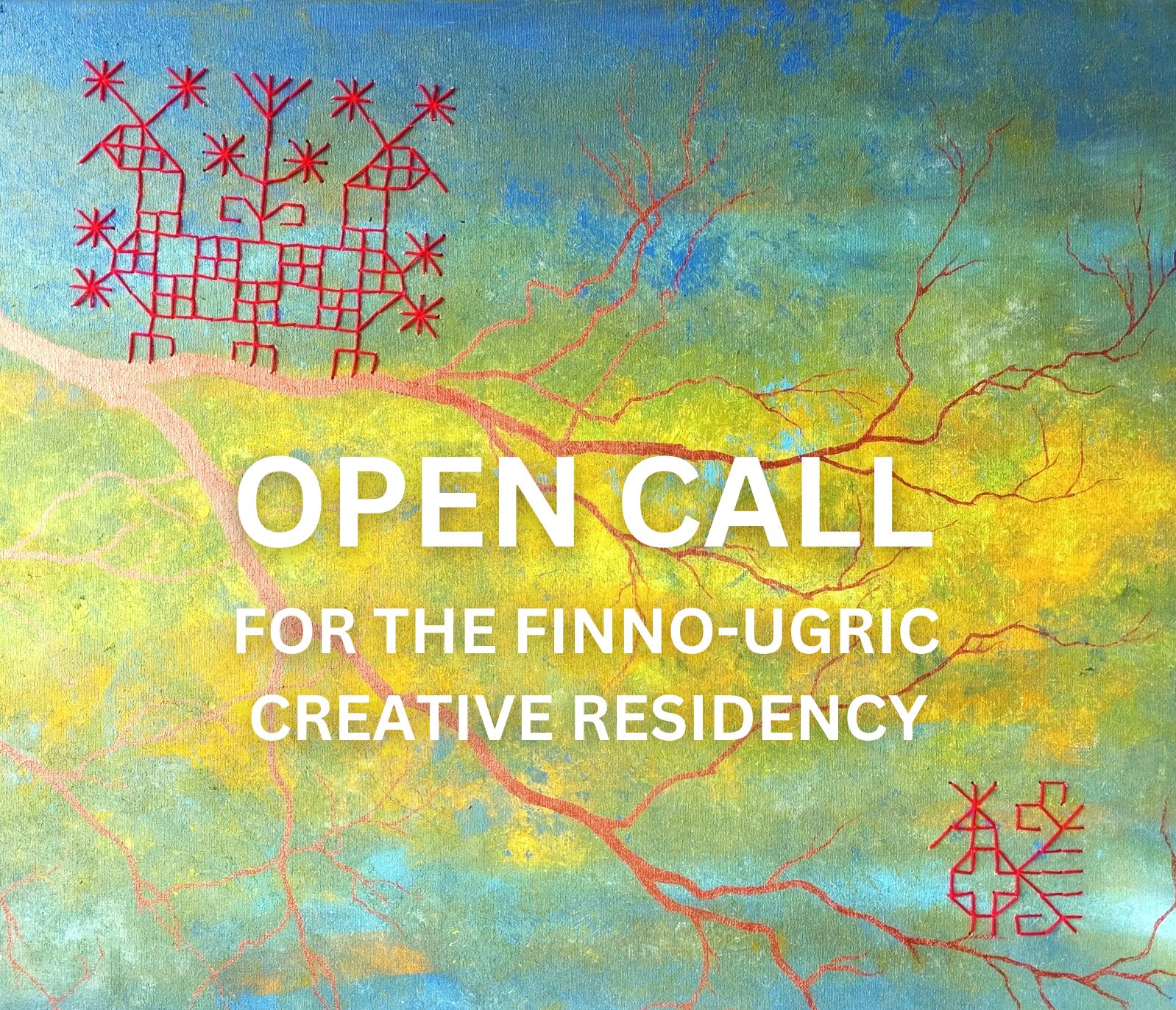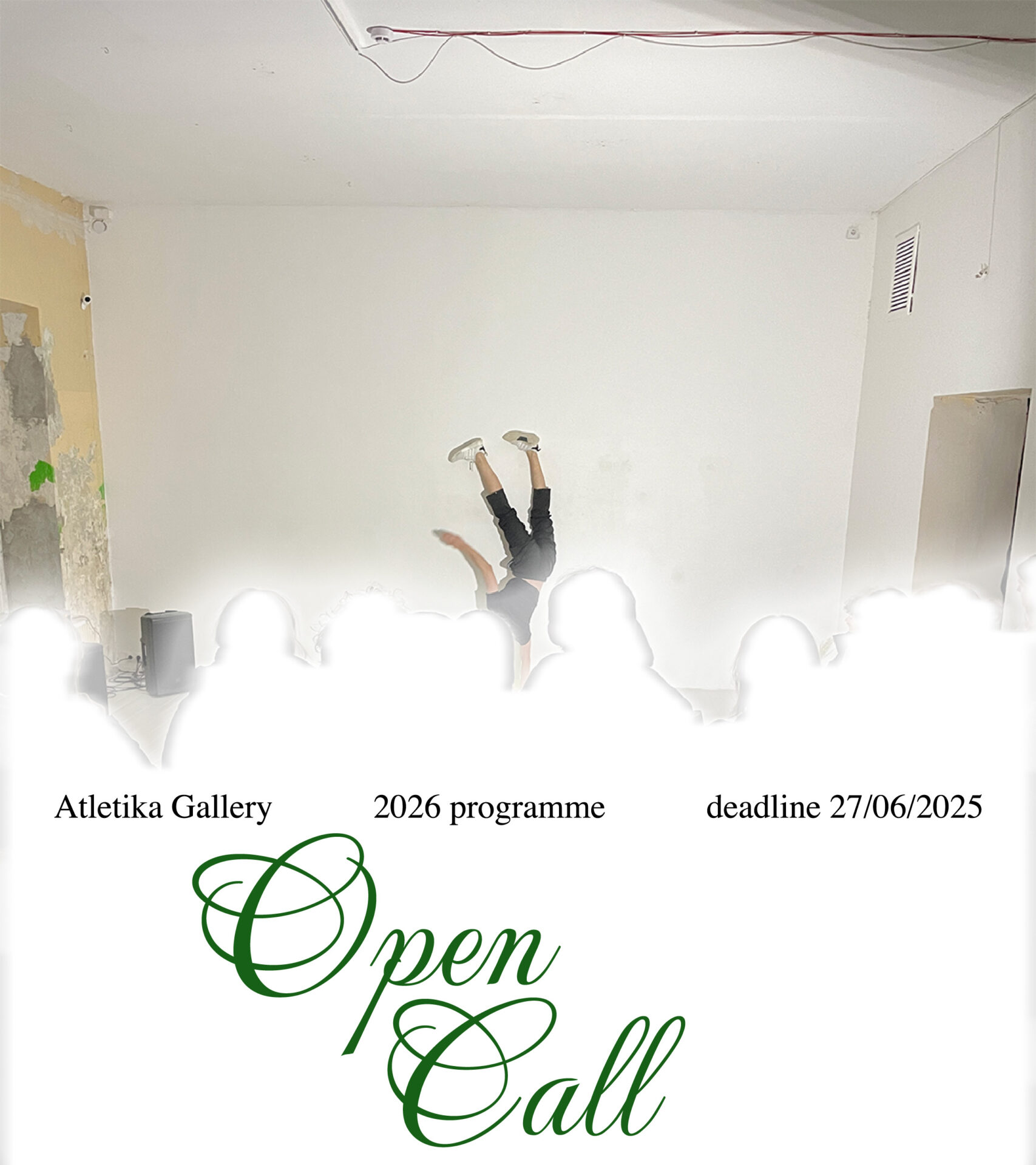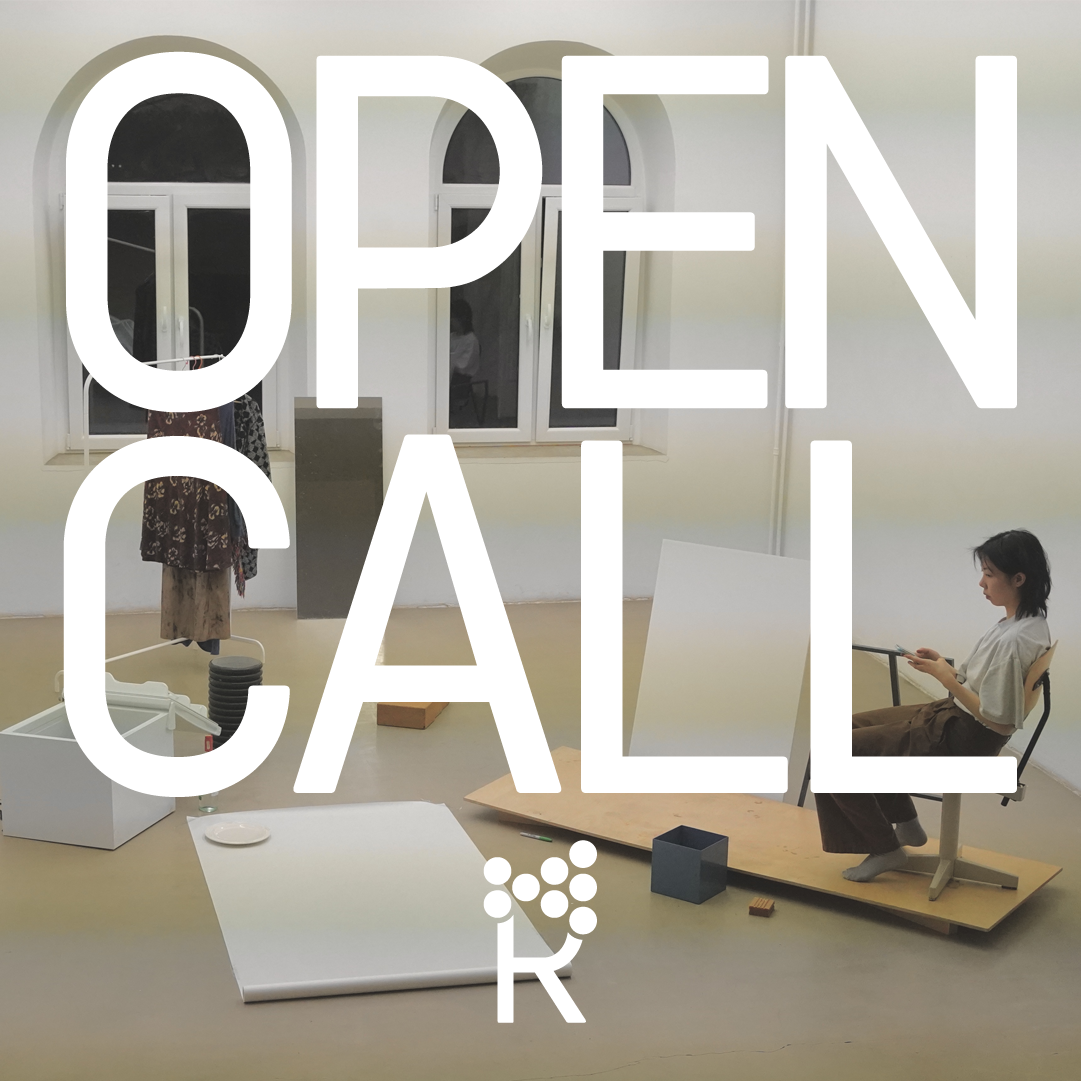Mickey Mouse and Minnie Mouse are in couples therapy. The therapist says, ‘So you say your wife is insane?’ Mickey replies, ‘I didn’t say she’s insane. I said she’s fucking Goofy.’
It’s a ridiculous line to open a review with, but one that nonetheless popped into my head when I encountered Nadia Naveau’s Funny Five Minutes (Goofin’ Around), positioned at the top of the stairs as one of the opener to the exhibition ‘Breaking the Joints’, curated by Edgaras Gerasimovičius and Post Brothers, currently on view at the Sapieha Palace. Both the placing of the sculpture and the joke’s punchline are not out of place here, as a gesture in delving into a show that asks what animation can reveal about bodies, violence, and the liminal space where sorrow brushes up against slapstick.

Nadia Naveau. Funny Five Minutes (Goofin’ Around), 2018. Blue stone powder, polyester, 180 × 230 × 160 cm. (foreground); and Jani Ruscica. Companion Piece (Purple Movement), 2025. Site-specific mural, glass paint on glass windows (fragment). Photographer: Andrej Vasilenko
The exhibition’s conceptual foundation draws its inspiration from the counter-intuitive animation principle, first articulated by Art Babbitt, where animators intentionally ‘disfigure’ or ‘break the joints’ of a character’s anatomy to give it solidity, weight, force and believability, suggesting the fundamental violence and trauma at the heart of cartoon joy realism. The exhibition stretches this idea into a comprehensive exploration of bodily deformation, cartoon logic, and how contemporary artists employ these tropes to comment on deeper social, material and political conditions. What is especially striking is that it is an entire exhibition dedicated to the expanded medium of animation, a curatorial decision that casts animation not as a niche or supporting discipline, but as a compelling lens through which to explore contemporary artistic concerns, especially since the exhibition broadens its focus beyond ‘pure’ animation in the traditional sense, extending to sculpture and drawing, and treating animation not just as a technique, but as a way of seeing, shaping and thinking. It unfolds aptly across the grand, ghosted interiors of the former military hospital, and ophthalmology, a clinical and surgical speciality within medicine that deals with the diagnosis and treatment of eye disorders. Here, the phrase ‘broken bodies’ and the exploration of how animation combines visual perception and the representation of the body has a visceral resonance. On one hand because of the building’s military past, but also because of Vilnius’ unsettling geographical proximity to russia, an aggressor whose war on Ukraine is relentlessly severing limbs and lives. Simultaneously, the very screens that in the years since the emergence of smartphones have become the natural habitat of animation, the frames in which they flex and rebound their muscles for our kids’ entertainment during restaurant hours now also serve as unblinking windows into real-time atrocities: footage of children trapped in flames in Gaza. This confluence of past and present, geopolitical location, and the chilling duality of the screen, its uncanny ability to transport us into both worlds of complete fiction and overwhelming reality, renders the exhibition’s exploration of ‘broken bodies’ extremely layered, somewhat unsettling, and at the same time, extraordinarily timely.

Oliver Laric. Hundemensch, 2018. Polyurethane, 53 × 52 × 58 cm. (foreground); and Hundemensch, 2018. Polyurethane, pigment, 53 × 52 × 58 cm. Photographer: Andrej Vasilenko
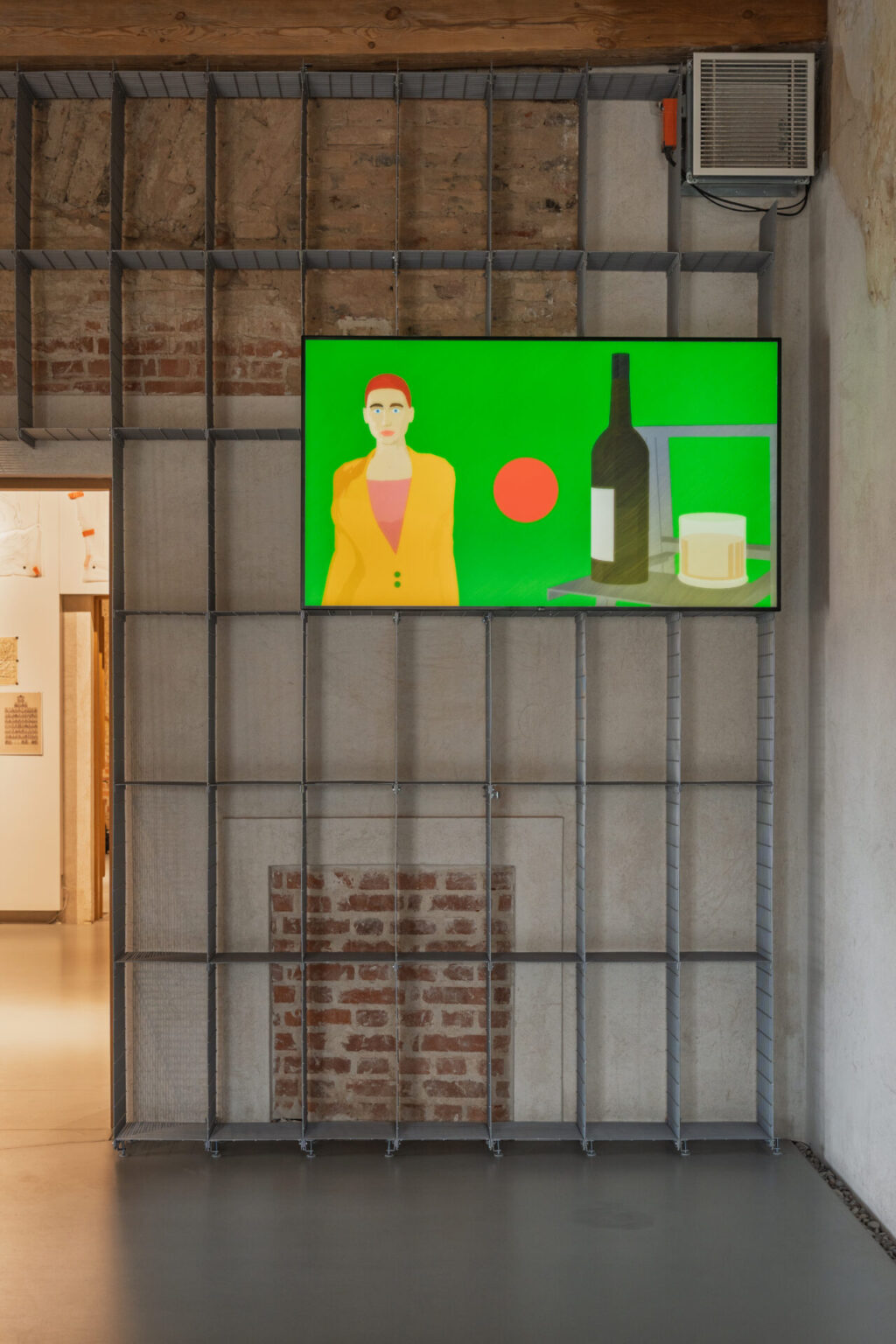
Barry Doupé. Bubble Boing, 2017. 3D computer animation, duration – 7’38”. Photographer: Andrej Vasilenko
As we move through the rooms, several works gently punctuate the curatorial theme with precision. Mateusz Sadowski’s Time Settings, a personal favourite, offers a meditative take on motion, not as speed but as sculpted time, suspended and tender. One room, Oliver Laric’s ‘Shapeshifters’ series, already canonical in the post-human discourse, suggests a body that is never fixed: liberated and spectral, able to inhabit many selves, but never truly at rest. It is ironic then, perhaps, how here the work, while still compelling, feels so neatly slotted into the show’s thematic thesis. At times, the curatorial frame feels so carefully constructed that certain individual works feel dulled under its strength. Take Barry Doupé’s continuously looping Bubble Boing: this 3D computer animation from 2017 invites, perhaps unfairly, comparison with his earlier presentation in Vilnius (also curated by Post Brothers and hosted at the time in Gerasimovičius’ gallery Swallow), which felt riskier, looser, and less constrained. These moments raise the question of whether the exhibition might have benefited from a bit more slapstick chaos, a bit more of Goofy’s actual goofiness. But pulling that off is a delicate task, one that resists easy resolution; and perhaps, in the end, would a humorous take really serve this subject? Funny ha-ha would not be able to offer the kind of tribute this exhibition now so carefully extends to the bodies and histories it seeks to unpack. A glimpse into how the curators have themselves grappled with this tension, between the historically comic register of animation and the gravity of the themes the show sets out to unpack, emerges in their note on the exhibition’s title. They explain that while the English ‘Breaking the Joints’ implies an active gesture, its Lithuanian parallel ‘Atbuli griaučiai’ (literally ‘backward skeleton’) evokes a kind of awkward, playful, macabre condition. This divergence on one hand simply arises from a gap in translation from one language into another, but it also opens up a more intimate reading of Art Babbitt’s approach. To create characters like Goofy, the animator did not just contort limbs; he imbued his figures with perpetual optimism, guileless confusion, and bumbling decency. This marked an important shift: from characters whose woes, like a loose board or a banana peel, and the comic effects that followed in their footsteps, were the result of their surroundings, to characters whose inner states gave rise to the absurd worlds around them. This nuanced interplay between external forces and internal states feels to the point with the works gathered in the show, and finds a particularly strong echo in Özgür Kar’s impressively large, looming two-channel videos Death playing the clarinet and Death, SHHHH (both 2023), which book-end the exhibition. In the latter, a skeletal figure cringes and shushes, animated and exhausted, caught in compulsive loops of melancholic performance and neurotic retreat. Entombed in the crates that brought them here, Kar’s skeletons inhabit a state of limbo: fully present, with one foot permanently out the door, refusing to perform or to absorb any meaning not already their own.
Keeping that kind of space in a group show is not easy, but ‘Breaking the Joints’ succeeds in balancing the funny and the painful, the weird and the real, par excellence. It holds up a timely mirror to all the cracks around us, and shows plenty of ways to grin or sit through it all. Because, honestly, what else can you do when a fool runs off with your wife?

Özgür Kar. Death playing the clarinet, 2023. 2-channel video, sound, duration – 12’. Courtesy of the Artist, and Emalin, London, and Edouard Montassut, Paris. Photographer: Andrej Vasilenko
Photo reportage from the exhibition ‘Breaking the Joints’ at the Sapieha Palace
Yana Foqué is a curator, an occasional director, a mom, an OK cook, and a writer. Currently, you can bump into her in the streets of Vilnius, Lithuania.

